The Yellow Jacket Mine is located in Gold Hill, Nevada. Gold Hill was incorporated on December 17, 1862 to remain separate from neighboring Virginia City.
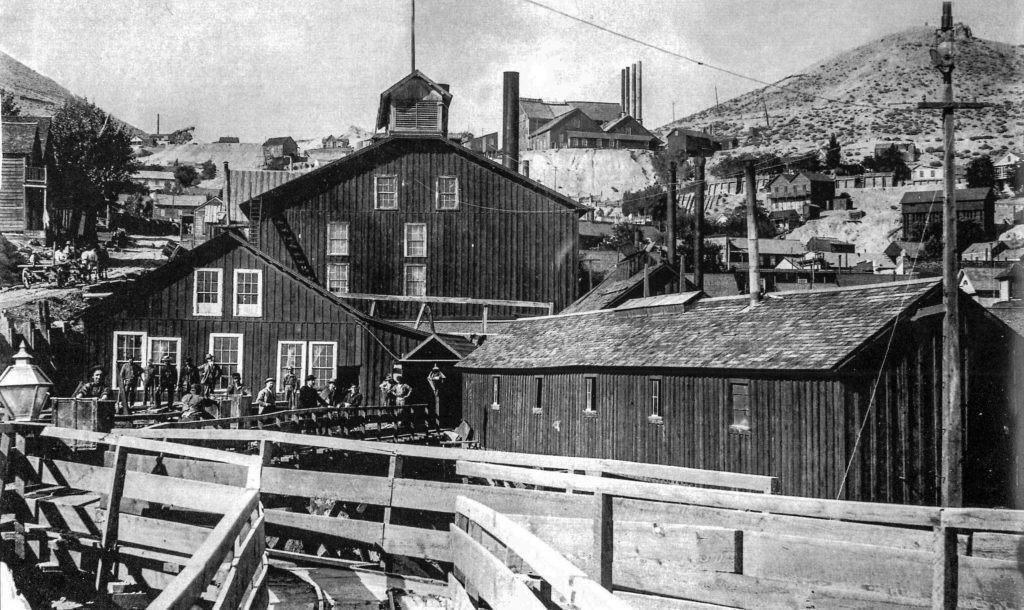
(Photo credit: WNHP)
Although Gold Hill was smaller than Virginia City, at its height the population topped 8,000. Gold Hill was known as the working man’s town versus the opulent and cultural Virginia City.

Gold Hill mines including the Yellow Jacket extracted over $10 million in gold and silver ore between 1868 and 1888.
(Photo credit: Wikipedia, Wikipedia, Ghost Towns)
The Yellow Jacket mine fire on April 7, 1869 was one of the worst mining disasters in Nevada history. A methane fire ignited by an unattended lamp broke out 800 feet below the surface. As the day crew were lowered into the mine, timbers smoldered and collapsed spilling poisonous gases into the Yellow Jacket mine, along with the nearby Kentuck and Crown Point Mines.
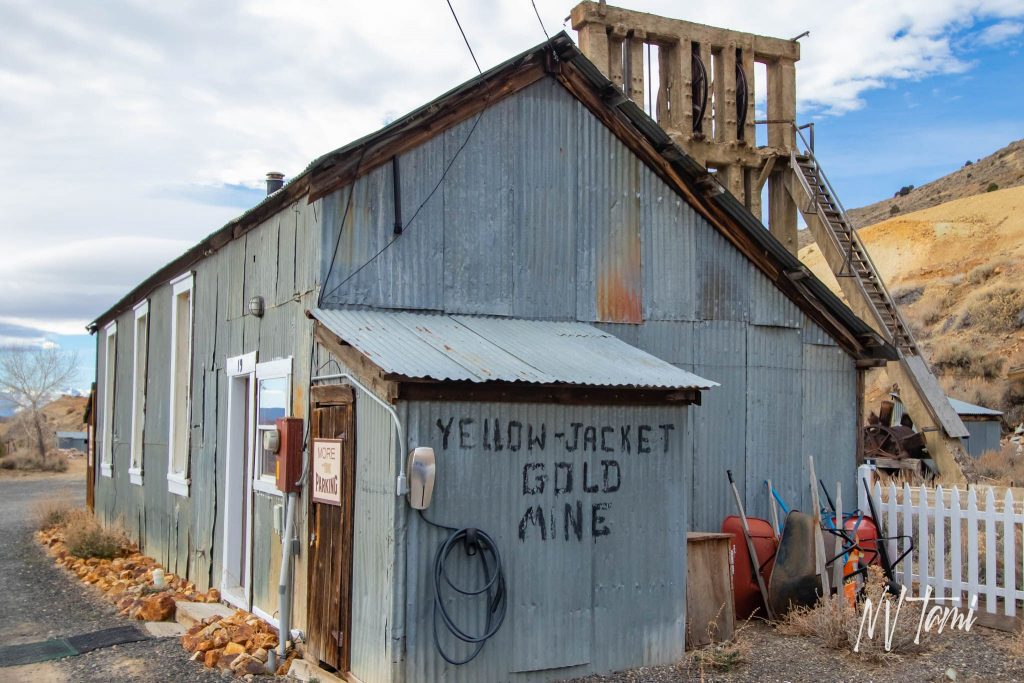
Firefighters attempted to rescue miners and extinguish the fire but they were pushed back by heat and flames. The few survivors describe the horrendous scene of miners fighting to survive. Over 35 people died, 11 bodies were never recovered. Had the fire occurred mid shift instead of at shift change, the fatalities would have been even higher.

(Photo credit: Only in Your State)
“The Calamity at Gold Hill April 8, 9 P.M. — The fire in the Gold Hill mines still continues to burn as bad as ever, owing to a cave-in in the Yellow Jacket. The firemen cannot now reach the fire. Every effort is being made to clear the drift. Eighteen dead bodies have been taken out of the drifts and the shafts of the burning mine. Nine lay together where they had climbed to a drift one hundred feet above the one thousand foot level. Two of the miners killed, John Hogan and Joseph McClellan, were members of the Virginia Fire Department. Funeral this afternoon.”
Morning Oregonian, Portland, Oregon
April 9, 1869
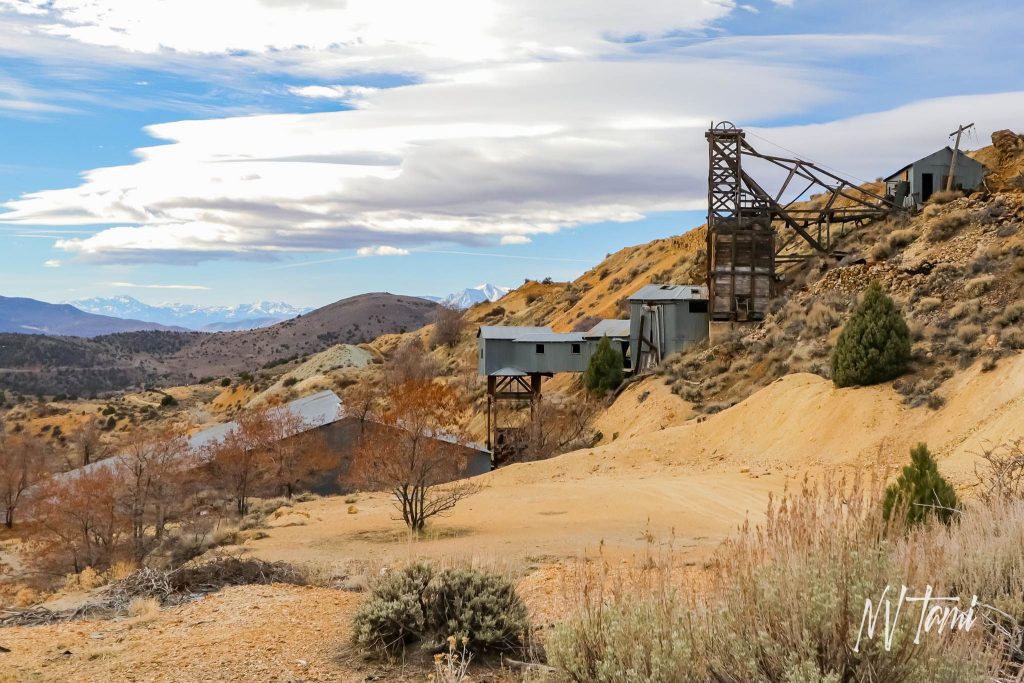
The fires continued to burn so the affected shafts were sealed off. Three weeks after the disaster miners returned to work to the accessible tunnels.
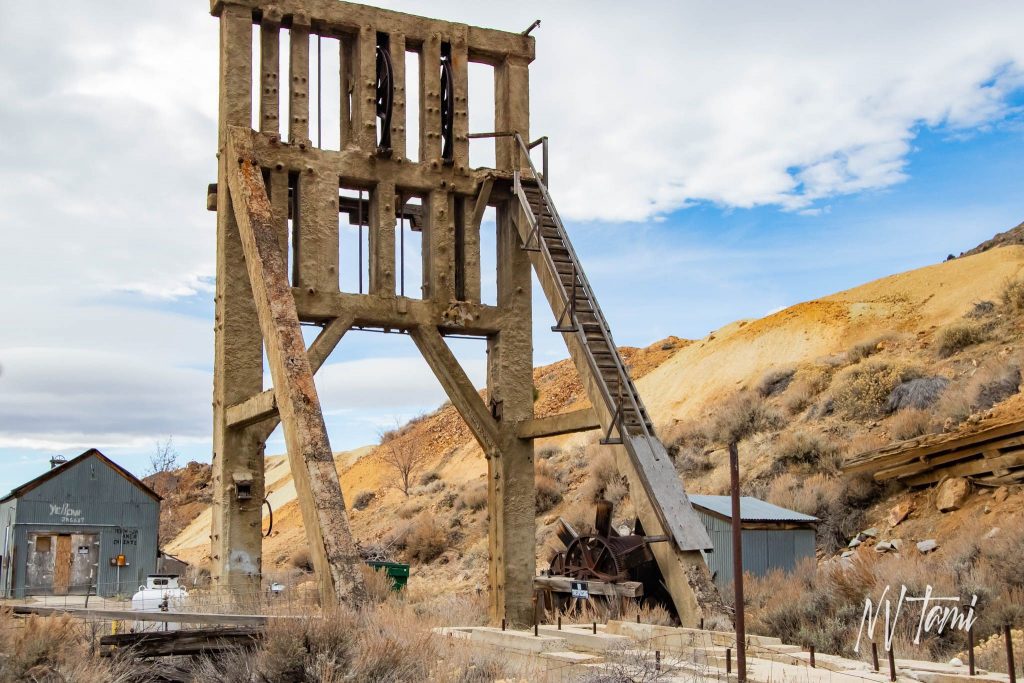
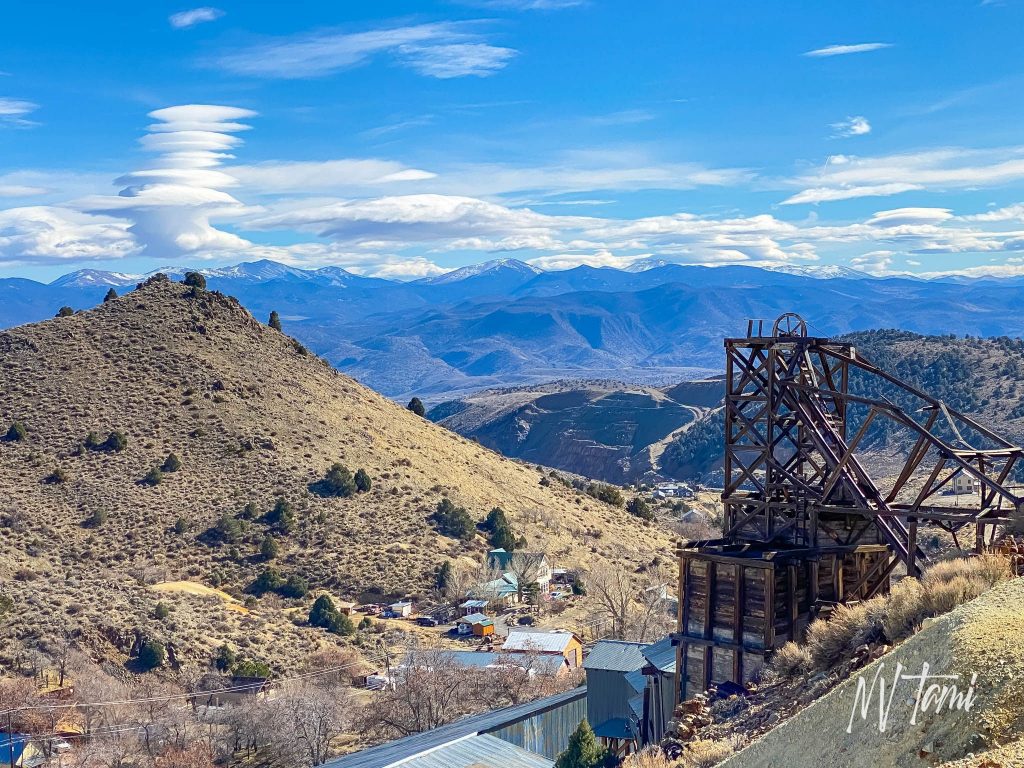
I explored the Yellow Jacket mine with my sister, author Nicole Force. We had started our day with massages our awesome mother gifted us. But what’s a girl to do after a relaxing massages? Explore ghost towns of course! We started our explorations at Butters Mill in 6 Mile Canyon. After we visited the Yellow Jacket Mine we finished our day with Bloody Mary’s at the Bucket of Blood!
The Yellow Jacket Miner’s Cabin is now owned by the Gold Hill Hotel and Saloon. It is apartment style and can be rented through the hotel. I haven’t stayed at the cabin, but have stayed at the hotel and the Brewery Lodge across the street. Their restaurant, Crown Point, has amazing dinners and a fun Sunday Brunch we enjoed the next morning. And you can have drinks at the historic Gold Hill Saloon just as Mark Tawain did. The hotel routinely hosts a historical lecture series.
Visited 2-15-2020
References
- Gen Disasters: Gold Hill, NV Yellow Jacket Mine Fire, Sep 1873
- Gold Hill Hotel & Saloon
- Lake Tahoe News: Genoa’s hanging tree a reminder of the past
- Newpapers.com: Fire at Yellow Jacket Mine fatal, at least 35 men killed
- Only In Your State: The Haunted Hike In Nevada That Will Send You Running For The Hills
- Paher, Stanley. Nevada Ghost Towns and Mining Camps. Nevada Publications, 1970. Page 29-31.
- Record Courier: Story Behind the Hanging Tree
- Smith, Grant H. The History of the Comstock Lode. University of Nevada Press, 1997. Page 90-98, 122-125.
- True West Magazine: Wall of Flame, Discover how James Dunlevy Survived the 1869 Fire in the Worlds’ “Hottest” Mine
- Visit Carson Valley: Genoa’s Hanging Tree
- Western Mining History: Yellow Jacket Mine
- Western Nevada Historic Photo Collection: Yellow Jacket Mine
- Wikipedia: Comstock Lode
- Wikipedia: Gold Hill, Nevada








ปั้มไลค์ says
Like!! Really appreciate you sharing this blog post.Really thank you! Keep writing.
Tami says
Thank you, I’m glad you have enjoyed the Gouge Eye Chronicle!
Ray Loftesness says
Hi Tami.
I stumbled upon your site while searching the internet for any historical information pertaining to disasters
that have taken place all over our country in more than a 100 years. The work that I am doing will hopefully
lead toward the publication of a book. My focus will be mostly be on man made disasters, and one of them
is mining of coal, silver, gold and other minerals. The death toll in the mining industry of mining is now
in the thousands. I think I will also cover a few events that have happened here and there up in the provinces
of Canada. Abd if I do this, the title of my book will be “A History of Disasters on the North American
Continent”, I have a cousin in the Denver, Colorado area who will help me get my resume off to a publisher
once I have finished it and he has read some of it. His name is Jack Berryhill and he use to practice law in
Denver, and he was also a judge..
There is a ghost town up in the N. E. corner of Oklahoma, this is known as Picher. Picher was a mining town
which provided the people of that city with most of their income. The product that came out of the mines
in Picher was lead. Lead is a very toxic material, and like everyone else at that period in time, the residents
of Picher were not aware of it. There were tailings from the lead mines there that are known as “chat”, and
it looks very much like sand. People were placing this poisonous material into their children’s sand boxes,
and 35% of their kids would eventually develop severe learning disabilities The drinking water in Picher
had also become contaminated, and sink holes all over the city of Picher showed up underneith a lot
of the buildings there. And there was another disaster much like this one, that had occured in Gilam,
Colorado. Gilam has become off-limits by the Enviromental Protection Agency.
Tami, my name is Ray Loftesness, and I am of Norwegian descent. My dad, Ray Loftesness, Sr is no longer
living, but he was a very prominent and well known radio broadcaster in Sioux Falls, South Dakota. This
is where I live, I was born in Sioux Falls in September of 1954. Iwill tell you a lengthy story about my Dad
and his radio broadcasting career later, if you ask me to share it with you.
Tami says
It sounds like a very interesting book. I haven’t researched mining disasters specifically, but I’m unfortunately sure there are more in Nevada.
I have been to sites in Nevada that were mercury mines. Some were destroyed by the EPA as superfund sights.